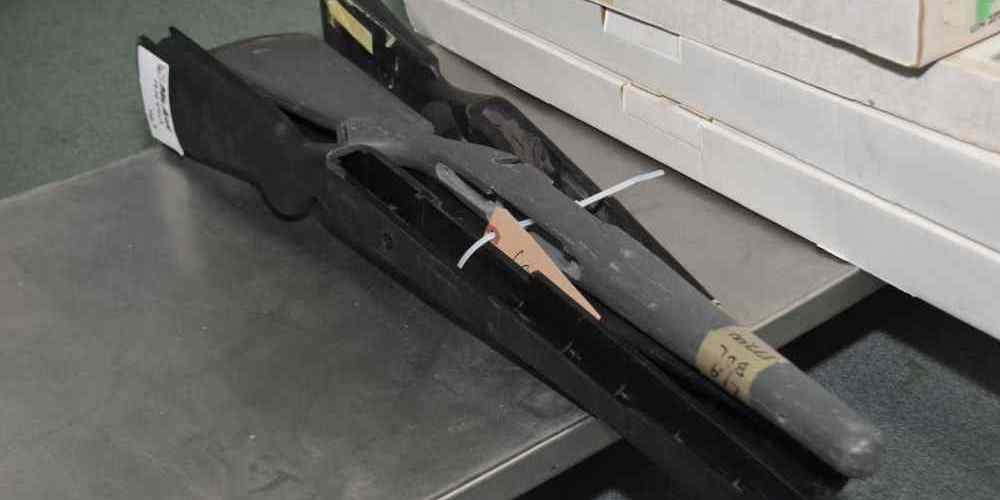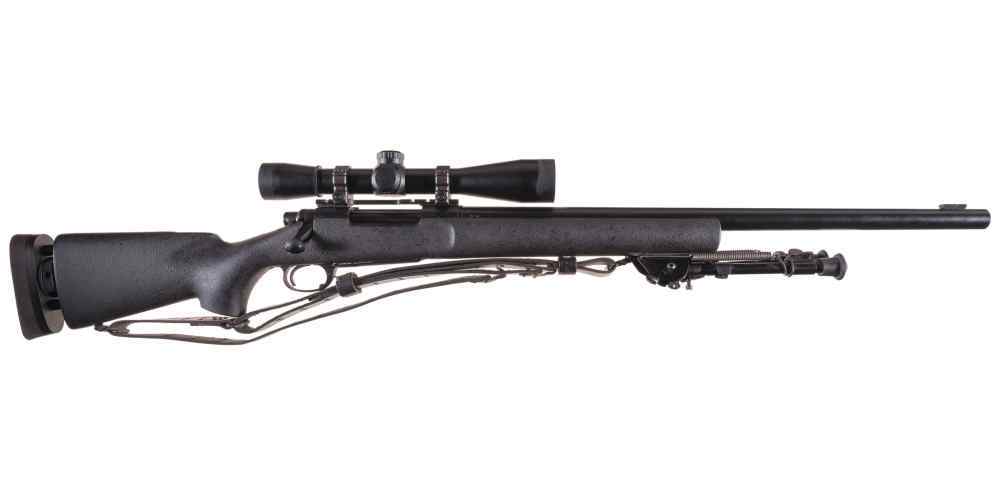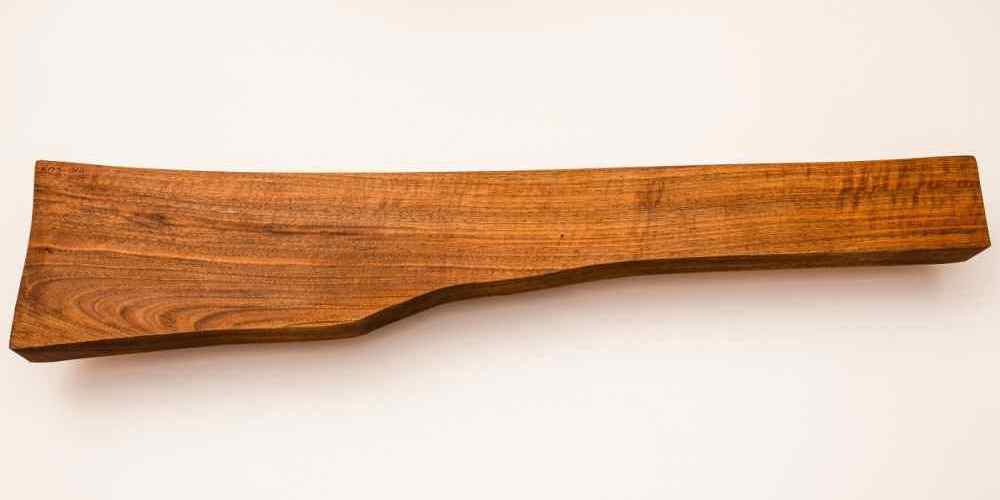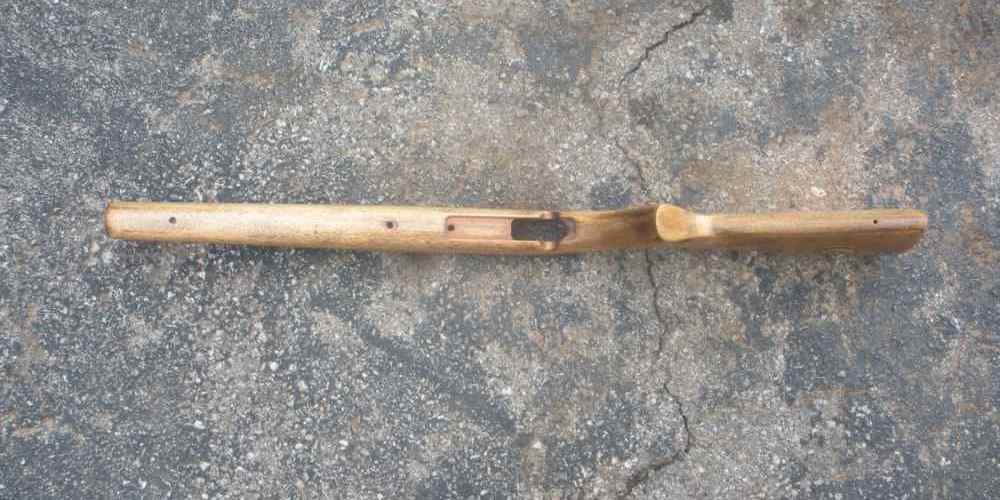“Restoring beauty and strength to your trusted firearm.”
Using Epoxy Resin to Repair Cracks in Wood Rifle Stocks
Wood rifle stocks are a crucial component of any firearm, providing stability and support for the shooter. However, over time, these stocks can develop cracks and other damage that can compromise their integrity and affect the accuracy of the rifle. Fortunately, with the right tools and materials, it is possible to repair these cracks and restore the stock to its original condition.
One of the most effective ways to repair cracks in wood rifle stocks is to use epoxy resin. Epoxy resin is a versatile and durable material that can be used to fill in cracks, reinforce weak spots, and restore the strength of the wood. It is also easy to work with and can be sanded and finished to match the original wood stock.
To begin the repair process, the first step is to clean the crack and remove any debris or loose wood fibers. This can be done using a small brush or compressed air to ensure that the crack is clean and free of any obstructions. Once the crack is clean, it is important to carefully assess the extent of the damage and determine the best way to proceed with the repair.
Next, mix the epoxy resin according to the manufacturer’s instructions. It is important to use a high-quality epoxy resin that is specifically designed for wood repairs to ensure a strong and durable bond. Once the epoxy resin is mixed, carefully apply it to the crack using a small brush or spatula. Make sure to work the resin into the crack and fill it completely to ensure a strong bond.
After the epoxy resin has been applied, it is important to allow it to cure completely before proceeding with any further steps. This can take anywhere from a few hours to a few days, depending on the type of epoxy resin used and the temperature and humidity of the environment. Once the epoxy resin has cured, it can be sanded and finished to match the original wood stock.
In addition to repairing cracks, epoxy resin can also be used to reinforce weak spots in the wood stock. This can be done by applying a thin layer of epoxy resin to the surface of the stock and allowing it to cure. This will help to strengthen the wood and prevent further damage from occurring.
Overall, using epoxy resin to repair cracks and damage in wood rifle stocks is a simple and effective way to restore the integrity and strength of the stock. By following these steps and using high-quality materials, it is possible to repair cracks and damage in wood rifle stocks and ensure that they continue to provide stability and support for years to come.
How to Fill and Sand Wood Rifle Stock Damage
Wood rifle stocks are a crucial component of any firearm, providing stability and support for the shooter. However, over time, these stocks can develop cracks and damage that need to be repaired to ensure the gun’s functionality and appearance. In this article, we will discuss how to fill and sand wood rifle stock damage to restore its original condition.

When it comes to repairing cracks and damage in wood rifle stocks, the first step is to assess the extent of the damage. Small cracks can often be filled with wood filler, while larger cracks may require more extensive repairs. Before beginning any repairs, it is essential to ensure that the rifle stock is clean and free of any dirt or debris that could interfere with the repair process.
To fill small cracks in a wood rifle stock, start by selecting a high-quality wood filler that matches the color of the stock. Apply the filler to the crack using a putty knife, making sure to fill the entire length of the crack. Once the filler has dried, sand it down using fine-grit sandpaper until it is smooth and level with the rest of the stock. Repeat this process as needed until the crack is completely filled and blended with the surrounding wood.
For larger cracks or damage in a wood rifle stock, a more extensive repair may be necessary. In these cases, it may be necessary to use wood glue and clamps to secure the damaged area before filling it with wood filler. Start by applying a generous amount of wood glue to the crack and using clamps to hold the damaged area together while the glue dries. Once the glue has set, follow the same process as filling small cracks with wood filler and sanding it down until smooth.
In addition to filling cracks, it is essential to sand the entire wood rifle stock to ensure a smooth and even finish. Start by using coarse-grit sandpaper to remove any rough spots or imperfections in the wood. Gradually work your way up to finer grit sandpaper, making sure to sand in the direction of the wood grain to avoid damaging the stock. Once the stock is smooth and free of any blemishes, finish by applying a coat of wood finish or sealant to protect the wood and enhance its appearance.
When filling and sanding wood rifle stock damage, it is essential to take your time and pay attention to detail to ensure a professional-looking repair. Remember to always use high-quality materials and tools to achieve the best results. By following these steps, you can restore your wood rifle stock to its original condition and enjoy many more years of shooting with confidence.
In conclusion, repairing cracks and damage in wood rifle stocks is a straightforward process that can be done at home with the right tools and materials. By filling cracks with wood filler, securing larger cracks with wood glue, and sanding the stock to a smooth finish, you can restore your rifle stock to its original condition and ensure its longevity. With a little time and effort, you can keep your wood rifle stock looking and performing its best for years to come.
Repairing Deep Gouges in Wood Rifle Stocks
Wood rifle stocks are a crucial component of any firearm, providing stability and support for the shooter. However, over time, these stocks can become damaged, with cracks and gouges appearing due to wear and tear. While these imperfections may seem daunting to repair, with the right tools and techniques, it is possible to restore your wood rifle stock to its former glory.
One common issue that rifle owners face is deep gouges in their wood stocks. These gouges can be unsightly and may even affect the performance of the firearm. Fortunately, there are several methods for repairing deep gouges in wood rifle stocks.
One of the first steps in repairing a deep gouge is to clean the area thoroughly. Use a soft cloth and a mild cleaning solution to remove any dirt or debris from the gouge. This will ensure that the repair material adheres properly to the wood.
Once the gouge is clean, you can begin the repair process. One popular method for repairing deep gouges is to use a wood filler. Wood fillers come in a variety of colors to match the finish of your rifle stock. Simply apply the filler to the gouge, making sure to fill it completely. Allow the filler to dry according to the manufacturer’s instructions.
After the filler has dried, you can sand the area smooth. Start with a coarse-grit sandpaper to remove any excess filler, then switch to a finer grit sandpaper to smooth out the surface. Be sure to sand in the direction of the wood grain to avoid damaging the stock.
If the gouge is particularly deep or wide, you may need to use a more advanced repair method. One option is to use a wood patch. Wood patches are thin pieces of wood that can be glued into the gouge to fill the space. Simply cut the patch to size, apply wood glue to the back, and press it into the gouge. Once the glue has dried, sand the area smooth as before.
Another option for repairing deep gouges is to use a wood epoxy. Wood epoxies are two-part compounds that harden to a durable finish. Mix the epoxy according to the manufacturer’s instructions and apply it to the gouge. Use a putty knife to smooth out the epoxy and allow it to dry completely. Once dry, sand the area smooth for a seamless finish.
Regardless of the method you choose, it is important to take your time and be patient during the repair process. Rushing through the repair can result in a subpar finish that may not hold up over time. By following these steps and using the right tools, you can repair deep gouges in your wood rifle stock and keep your firearm looking and performing its best.
Restoring Finish on Wood Rifle Stocks After Repairs
Wood rifle stocks are a beautiful and essential component of any firearm. They provide stability and support for the shooter, as well as adding to the overall aesthetic appeal of the gun. However, over time, wood rifle stocks can become damaged or develop cracks that need to be repaired. In this article, we will discuss how to repair cracks and damage in wood rifle stocks, as well as how to restore the finish on the wood after making repairs.
When it comes to repairing cracks and damage in wood rifle stocks, the first step is to assess the extent of the damage. Small cracks can often be repaired with a simple wood glue, while larger cracks may require more extensive repairs. To repair a small crack, start by cleaning the area around the crack with a damp cloth to remove any dirt or debris. Apply a small amount of wood glue to the crack, then use a clamp to hold the crack closed while the glue dries. Once the glue has dried, sand the area smooth and refinish the wood as needed.
For larger cracks or more extensive damage, it may be necessary to use a wood filler to repair the stock. Start by cleaning the area around the crack with a damp cloth, then apply the wood filler to the crack using a putty knife. Smooth the filler out as much as possible, then allow it to dry completely before sanding the area smooth. Once the filler has dried and been sanded, refinish the wood as needed to match the rest of the stock.
After making repairs to the wood rifle stock, it is important to restore the finish to ensure that the repaired area blends in seamlessly with the rest of the stock. Start by sanding the entire stock with a fine-grit sandpaper to remove any old finish and smooth out any imperfections. Once the stock has been sanded, apply a wood stain to match the color of the rest of the stock. Allow the stain to dry completely before applying a clear coat of finish to protect the wood and give it a glossy sheen.
When applying the finish, be sure to follow the manufacturer’s instructions for best results. Some finishes may require multiple coats, while others may only need one. Allow each coat to dry completely before applying the next, and be sure to sand the stock lightly between coats to ensure a smooth finish. Once the final coat of finish has dried, buff the stock with a soft cloth to bring out the shine and protect the wood from damage.
In conclusion, repairing cracks and damage in wood rifle stocks is a simple process that can be done at home with the right tools and materials. By following these steps and taking care to restore the finish after making repairs, you can keep your wood rifle stock looking beautiful and functioning properly for years to come. Remember to take your time and be patient, as rushing through the repair process can result in a less-than-perfect finish. With a little time and effort, you can restore your wood rifle stock to its former glory and enjoy shooting with it for many more years.
Preventing Future Cracks and Damage in Wood Rifle Stocks
Wood rifle stocks are a crucial component of any firearm, providing stability and support for the shooter. However, over time, these stocks can develop cracks and other damage that can affect the performance of the rifle. In this article, we will discuss how to repair cracks and damage in wood rifle stocks, as well as how to prevent future issues from occurring.
When it comes to repairing cracks in wood rifle stocks, the first step is to assess the extent of the damage. Small cracks can often be repaired with a simple wood glue, while larger cracks may require more extensive repairs. To repair a small crack, start by cleaning the area around the crack with a damp cloth to remove any dirt or debris. Apply a small amount of wood glue to the crack, then use a clamp to hold the crack closed while the glue dries. Once the glue has dried, sand the area smooth and refinish the stock as needed.
For larger cracks or more severe damage, it may be necessary to use a wood filler to repair the stock. Start by cleaning the area around the crack as before, then apply the wood filler to the crack using a putty knife. Smooth the filler with the knife, then allow it to dry completely before sanding and refinishing the stock. This method can be more time-consuming than using wood glue, but it is often necessary for more severe damage.
In addition to cracks, wood rifle stocks can also suffer from other types of damage, such as dents or scratches. To repair these issues, start by sanding the damaged area to remove any rough edges or splinters. If the damage is deep, you may need to use a wood filler to fill in the area before sanding and refinishing the stock. For minor scratches, you can often buff them out with a fine-grit sandpaper and then refinish the stock as needed.
While it is important to know how to repair cracks and damage in wood rifle stocks, it is equally important to take steps to prevent future issues from occurring. One of the best ways to prevent cracks and damage is to properly care for your rifle stock. This includes storing it in a cool, dry place away from direct sunlight and moisture, as well as regularly cleaning and oiling the stock to prevent drying out and cracking.
Another way to prevent damage to your wood rifle stock is to handle it with care. Avoid dropping or banging the stock against hard surfaces, as this can cause dents and scratches. When transporting your rifle, use a padded case to protect the stock from damage. Additionally, be sure to regularly inspect your stock for any signs of wear or damage, and address any issues promptly to prevent them from worsening.
By taking the time to properly care for and maintain your wood rifle stock, you can prevent cracks and damage from occurring and ensure that your firearm performs at its best. If damage does occur, knowing how to repair it can help extend the life of your stock and keep your rifle in top condition. With a little time and effort, you can keep your wood rifle stock looking and performing like new for years to come.






